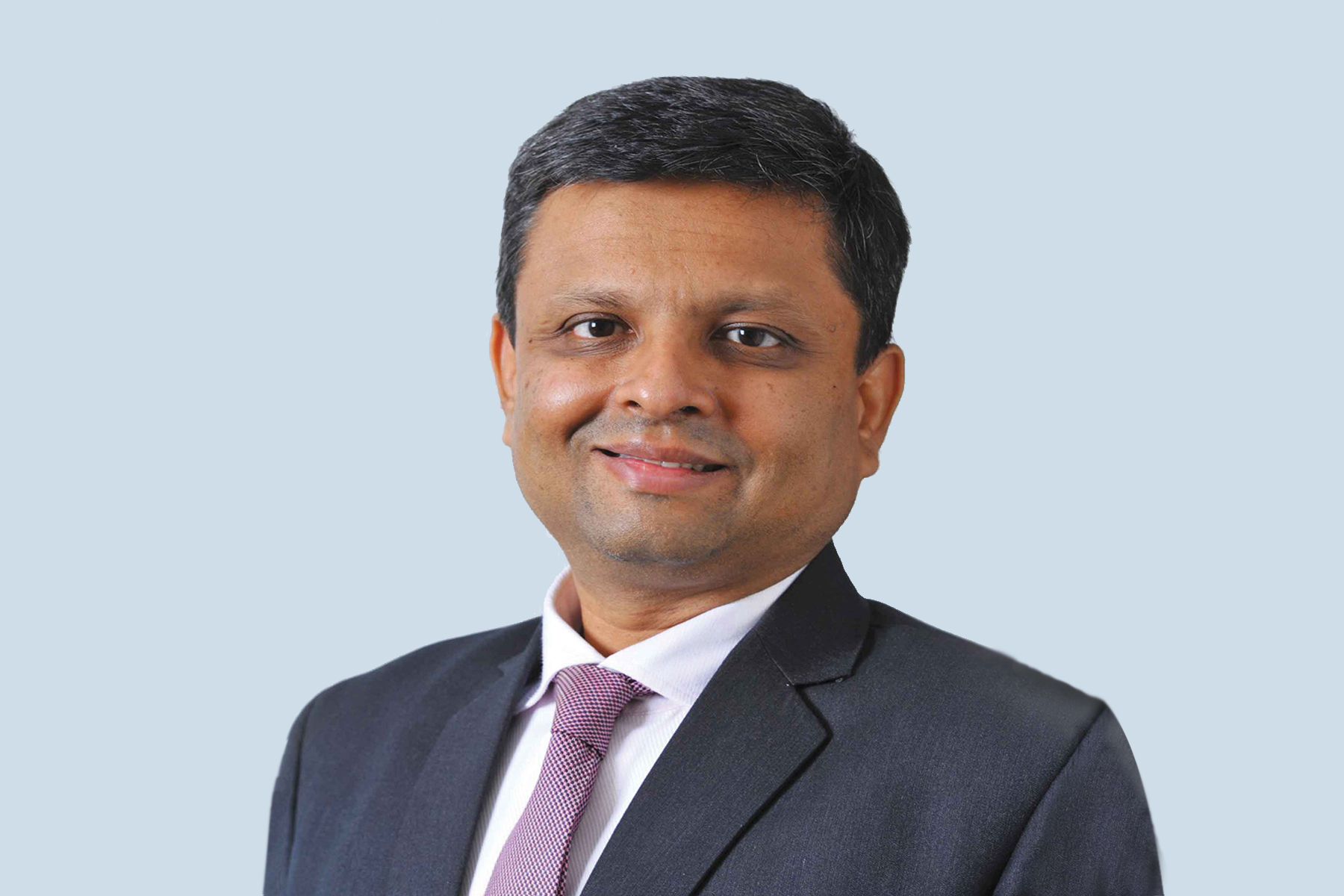Union Budget 2024
Our team of senior tax and policy professionals decodes and analyzes various aspects of Budget 2024.
Register for
Budget 2024 Webcasts
Download Budget 2024 highlights
Join the conversation
#EYonBudget2024
EY Leaders on Budget 2024
The government efforts reflect a comprehensive strategy to transform agriculture, focusing on climate-resilient practices, boosting productivity, enhancing efficiency. The initiatives aim to equip farmers with the tools needed for sustainable growth in changing climates. The budget also sets its intention on enhancing productivity and marketing in the sector, evident in initiatives focusing on development of clusters across major FPO and consumer centres, push for shrimp breeding and exports.

Amit Vatsyayan
Leader GPS-Agriculture, Livelihood, Social and Skills, EY India
The budget's focus on energy security and climate resilience is commendable. The PM Surya Ghar Muft Bijli Yojana, which aims to install rooftop solar panels on 1 crore homes and provide up to 300 units of free electricity per month, stands out as a significant initiative.

Saunak Saha
Partner, Climate Change and Sustainability Services, EY India – Climate change
Three macro themes are playing out in Consumer and Retail sector:
- Increased consumption push through agriculture reforms, Employment generation push, Urbanisation, controlled inflation and Growth Push
- Abolition of Angel Tax for Startups could benefit digitally first brands, etc.
- Push domestic sourcing through promoting domestic manufacturing through industrial parks, custom duty changes etc.

Paresh Parekh
EY India Partner and Tax Leader - Consumer Product and Retail Sector
The Government of India (GoI) has accelerated the process of fiscal consolidation by targeting a reduced fiscal deficit to GDP ratio of 4.9% in 2024-25 as compared to 5.1% provided in the interim budget. Relative to 2023-24, when it was 5.6%, this implies a correction of 0.7% points. An important implication is that GoI’s gross and net market borrowings would be reduced in terms of magnitude which would now amount to INR14.01 lakh crore and INR11.63 lakh crore respectively in 2024-25. This turnaround would facilitate a reduction in policy interest rates and encourage private investment. The emphasis on fiscal consolidation implies reaching the FRBM target of 3% of GDP by 2027-28 with an annual correction of 0.7% points in the next two years followed by 0.5% points in 2027-28. In the medium-term therefore, the private sector would be progressively facilitated to increase its investment demand.

Dr DK Srivastava
Chief Policy Advisor, EY India
The budget announcement on making data and statistics available, will help facilitate access to data, which would also come in handy for AI development. Operationalisation of Rs 100,000 Crore innovation fund would help entrepreneurs and businesses with R&D related investments that may also lead to AI. The Digital Public Infrastructure is proposed for covering sectors like credit, education, healthcare, law and order, etc.

Rajnish Gupta
Partner, Tax and Economic Policy Group, EY India
The Union Budget presents a transformative vision for India's energy sector, emphasizing a robust push towards new energy. While the Finance Minister highlighted the impressive response garnered by rooftop solar plants policy announced as part of interim budget, commitment to research and development of small and modular nuclear reactors underscores the government's foresight in diversifying the energy portfolio and reducing carbon emissions. Effective implementation could position India as a leader in next-generation nuclear technologies, fostering private sector collaborations and boosting high-tech manufacturing.

Raju Kumar
Partner and Energy Tax Leader, EY India
The first budget of the new government has been announced with a focus on employment generation, MSME sector and the Indian middle class. Some of the changes from a direct tax perspective like the removal of angel tax, peak rate of taxation for foreign bank etc. are welcome from a financial services perspective.

Keyur Shah
Partner and Leader — Financial Services Tax, EY India
The budget has set a new course for GIFT City IFSC, aligning the tax treatment of Retail Schemes and Exchange Traded Fund (ETFs with Category III IFSC Alternate Investment Funds in India (AIFs), thus will attract global fund managers and boosting the fund management ecosystem. Additionally, IFSC Finance companies now enjoy an exemption from thin capitalisation rules, encouraging the establishment of Finance Companies and treasury units.
Jaiman Patel
Tax Partner – Financial Services, EY India
The Union Budget 2024 lays a robust foundation for achieving Viksit Bharat 2047, prioritizing urban development. It emphasizes city-led growth and PM Awas Yojana-Urban 2.0, with a significant focus on affordable housing, allocating Rs 2.2 lakh crore for affordable housing and Rs 10 lakh crore for urban housing.
Adil Zaidi
EY Partner & Leader - Economic Development Advisory – Infrastructure
India aims to boost domestic manufacturing by changing import duties in sectors like medical devices, energy, and defense. To create more jobs and support MSMEs manufacturers, the government plans to offer employment incentives and expand credit guarantees.

Saurabh Agarwal
EY India Tax Partner
The budget has maintained a neutral stance towards the Pharmaceutical and Healthcare sector. Noteworthy advancements include a commitment to enhance R&D, with an emphasis on basic research and the development of prototypes - re-emphasis of commitment made in interim budget.

Hitesh Sharma
Partner and Life Sciences Leader – Tax, EY India
The Finance Minister has in the budget proposals focussed on bolstering macroeconomics and catering to the needs of ‘Garib’ (Poor), ‘Mahilayen’ (Women), ‘Yuva’ (Youth) and ‘Annadata’ (Farmer). Budget presented today proposes simplification of taxes through immediate measures such as overhaul of capital gains tax regime and making new tax regime more attractive as also on long-term tax reforms which involve comprehensive review of the existing Income-tax law, de-criminalization of penalty provisions and reducing tax disputes.

Sonu Iyer
Tax Partner and People Advisory Services Leader, EY India
Embracing the Digital India mission's expansive reach and leveraging Digital Public Infrastructure for agricultural reforms, the Government is setting a new benchmark for technological integration in governance. The Union Budget 2024's pledge to digitalize the residual services of Customs and Income Tax epitomizes the 'Viksit Bharat' ethos, paving the way for a frictionless, paperless tax administration in the transformative epoch of 'Amrit Kaal'.

Rahul Patni
Digital Tax Leader, EY India
Video bytes: EY Leaders on Budget 2024
Budget webcasts
| Event name | Schedule | Lead Partner(s) | Register | Venue/ Virtual |
| India Budget Analysis - Japan Desk | 26 July, 10:00 a.m. | Tetsuo Yamaguchi/ Miki S Watanabe | Join here | Virtual |
| CII New Delhi – EY event | 26 July, 2:30 p.m. | Ganesh Raj and Uday Pimprikar | Contact | Venue: TBD |
| EY and Projects Today webcast: Infrastructure sector | 26 July, 11:00 a.m. | Neetu Vinayek and Uma Iyer | Click here to register | Virtual |
| Impact on Oil and Gas sector | 26 July, 2.30 p.m. | Neetu Vinayek and Uma Iyer | Click here to register | EY Ruby office, Mumbai |
| CII Baroda – EY event | 26 July, 3:00 p.m. | Prashant Maheshwari | Contact | Physical session |
| Webcast with Organisation of Pharmaceutical Producers of India (OPPI) | 26 July, 3:00 p.m. | Hitesh Sharma and Ashish Jain | Contact | Virtual |
| Webcast with EY US Desk | 31 July, 1:00 p.m. EST | Sameer Gupta, Pranav Sayta and Uday Pimprikar | Contact | Virtual |
Join our conversations on Budget 2024
Contact us
Like what you’ve seen? Get in touch to learn more.

